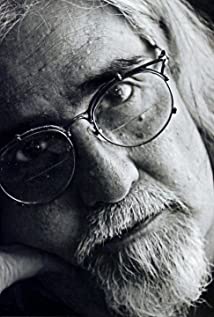PEQUE Gallaga was recently awarded The Natatanging Gawad for Lifetime Achievement for Filmmaking from the Manunuri ng Pelikulang Pilipino during the 32nd Gawad Urian last September 19 at the Cultural Center of the Philippines. National Artist Bienvenido Lumbera, founding member of the Manunuri, the society of respected film critics, says Gallaga is...
Show more »
PEQUE Gallaga was recently awarded The Natatanging Gawad for Lifetime Achievement for Filmmaking from the Manunuri ng Pelikulang Pilipino during the 32nd Gawad Urian last September 19 at the Cultural Center of the Philippines. National Artist Bienvenido Lumbera, founding member of the Manunuri, the society of respected film critics, says Gallaga is "the epitome of the compleat Filipino cinema artist," and that it is only fitting that Gallaga be honored by all those who love Filipino cinema "before the sun completely sets on the film industry."The waxing and waning of the fortunes of mainstream cinema seems reflected in the person of Gallaga, a serious filmmaker with a track record of box-office hits and successful remaking of commercial genres, particularly of horror and fantasy movies. As mainstream commercial cinema struggles, independent and out-of-studio films have shown vibrancy and resilience, even catapulting Filipino movie to new global renown. Part of these stirrings of hope can be gleaned from the emergent regional cinema, whose mentorship and encouragement owes to Gallaga's selfless tutelage. Gallaga has won several Urian awards: Best Director for "Oro Plata Mata" in 1982; Best Production Design for "Ganito Kami Noon, Paano Kayo Ngayon?" (together with Laida Lim Perez) in 1976, and for "Manila By Night: City After Dark" in 1980. Gallaga entered into prominence with "Ganito Kami Noon..." directed by Eddie Romero. This important historical movie was shown on the same year as Brocka's "Insiang," Ishmael Bernal's "Nunal sa Tubig," Lupita Concio's "Minsa'y Isang Gamu-Gamo," Gerry de Leon's "Banawe," Mike de Leon's "Itim," Mario O' Hara's "Tatlong Taong Walang Diyos," and Gil Portes' debut movie, "Tiket Mama, Tiket Ale, Sa Linggo ang Bola" - making 1976 the peak of the second golden age of Philippine cinema. Gallaga's early career illustrates the truism that great filmmakers do not necessarily influence each other; more practically, they work with each other, often in an unwitting sort of apprenticeship. Brocka had worked with Romero as scriptwriter; Mike de Leon had worked with Brocka and later, Romero, as cinematographer. Gallaga, who finished Commerce and Liberal Arts at De la Salle University but had enrolled briefly in the architecture school of the University of Santo Tomas, had worked with Romero and Bernal (notably in "Manila By Night") as production designer. Also an actor, Gallaga played a part in "Tatlong Taong Walang Diyos," and Brocka's "Gumising Ka, Maruja" (1978).Gallaga would become a full-fledged filmmaker with his second directorial effort, "Oro Plata Mata" (1982), and later, "Scorpio Nights" (1985), arguably his two best movies. In both movies, Gallaga shows directorial breadth of vision and art director's capaciousness, and it is hard to tell which is which. Since he's also the writer of "Oro," Gallaga may have demolished the classic auteur theory or embodied it in its fullest sense: he is author and creator in one. He would exhibit the same bravura in "Virgin Forest" (1985), "Unfaithful Wife" (1986), and in his recasting of the horror genre, the very successful "Shake, Rattle and Roll" series. His "Once Upon a Time" (1988) is another brilliant recasting, this one of Filipino folklore, with Dolphy playing the mythical role of the Filipino netherworld's tikbalang. And his "Gangland" (1998) may have set off the gritty urban street drama of today, as manifested in such provocative movies as Brillante Mendoza's "Tirador" and Jim Libiran's "Tribu." Gallaga continues to make movies while based in his hometown of Bacolod, where he is artist-in-residence, and where he teaches theater and film at the University of St. La Salle. He has mentored future filmmakers and media artists, including Jay Abella, Manny Montelibano, Vicente Groyon and Richard Somes. A multi-variegated artist of intrepid vision and incredible stamina, Gallaga has become one of our few elder statesmen of the cinema arts.
Show less «



